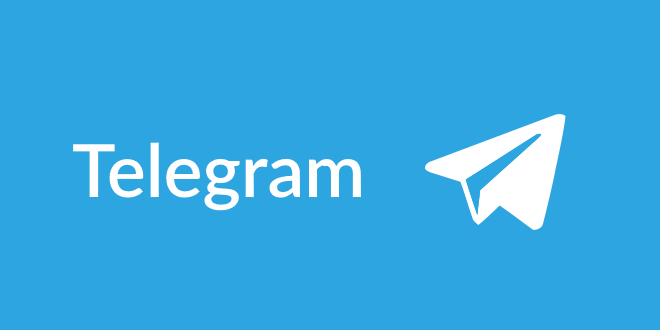Telegram: Entwickler bringen Premium-Funktionen und Werbung im kommenden Jahr

Der Telegram Messenger ist schon seit einigen Jahren ein fester Begleiter dieses Projekts. Wir sind mit Dr. Windows dort nicht nur mit einem Chat für die Community vertreten, auch einen entsprechenden Newsfeed bieten wir euch dort an. Nachdem Telegram die meisten Zeit für seine Mitglieder und Nutzer kostenlos war und vor allem durch seine Gründer querfinanziert wurde, kündigte Telegram-Chef Pavel Durov auch mit Blick auf die bald 500 Millionen Nutzer des Dienstes eine umfassendere Monetarisierung für das kommende Jahr an.
Sämtliche Funktionen, die aktuell im Messenger genutzt werden können, werden auch weiterhin kostenlos bleiben. Die Entwickler planen aber zusätzliche Funktionen für Business-Teams und Poweruser, wovon einige auch mehr Ressourcen beanspruchen und deswegen gegen Bezahlung angeboten werden sollen. Außerdem kündigt Telegram sein eigenes Werbenetzwerk an, was nutzerfreundlich sein und die Privatsphäre seiner Nutzer respektieren soll. Es soll ausreichen, um die Kosten für die Server und den Traffic zu decken, aber die Anzeigen sollen nur in Kanälen wie z.B. dem Newsfeed von Dr. Windows eingeblendet werden. Einzel- und Gruppenchats bleiben werbefrei.
Telegram will seiner Community auch etwas zurückgeben, sobald das Projekt startet, eigene Einnahmen zu generieren. So sollen zum Beispiel Künstler, die Premium-Sticker erstellen, auch an den Einnahmen beteiligt werden. Pavel Durov macht aber deutlich, dass Telegram auf keinen Fall verkauft werden und unabhängig bleiben soll. Normale Nutzer sollen zudem auch weiterhin in den meisten Fällen von neuen Funktionen profitieren, die für alle kostenlos zur Verfügung stehen werden. Den entsprechenden Beitrag habe ich euch hier verlinkt, zudem steht er hier auch nochmal unter dem Beitrag.
As Telegram approaches 500 million active users, many of you are asking the question – who is going to pay to support this growth? After all, more users mean more expenses for traffic and servers. A project of our size needs at least a few hundred million dollars per year to keep going.
For most of Telegram’s history, I paid for the expenses of the company from my personal savings. However, with its current growth Telegram is on track to reach billions of users and to require appropriate funding. When a tech project reaches this scale, typically there are two options – start earning money to cover the costs, or sell the company.
Hence the question – which path will Telegram take? I’d like to make a few points to clarify our plan:
1. We are not going to sell the company like the founders of Whatsapp. The world needs Telegram to stay independent as a place where users are respected and high-quality service is ensured. Telegram must continue to serve the world as an example of a tech company that strives for perfection and integrity. And, as the sad examples of our predecessors show, that is impossible if you become part of a corporation.
2. Telegram is here to stay for a long time. We began developing our apps for our personal use over 8 years ago and have come a long way since then. In the process, Telegram changed the way people communicate in several aspects – encryption, functionality, simplicity, design, speed. This journey has just started. There’s much more we can – and will – bring to the world.
3. In order to make points 1 and 2 possible, Telegram will begin to generate revenue, starting next year. We will do it in accordance with our values and the pledges we have made over the last 7 years. Thanks to our current scale, we will be able to do it in a non-intrusive way. Most users will hardly notice any change.
4. All the features that are currently free will stay free. We will add some new features for business teams or power users. Some of these features will require more resources and will be paid for by these premium users. Regular users will be able to keep enjoying Telegram – for free, forever.
5. All parts of Telegram devoted to messaging will remain ad-free. We think that displaying ads in private 1-to-1 chats or group chats is a bad idea. Communication between people should be free of advertising of any sort.
6. In addition to its messaging component, Telegram has a social networking dimension. Our massive public one-to-many channels can have millions of subscribers each and are more like Twitter feeds. In many markets the owners of such channels display ads to earn money, sometimes using third-party ad platforms. The ads they post look like regular messages, and are often intrusive. We will fix this by introducing our own Ad Platform for public one-to-many channels – one that is user-friendly, respects privacy and allows us to cover the costs of servers and traffic.
7. If Telegram starts earning money, the community should also benefit. For example, If we monetize large public one-to-many channels via the Ad Platform, the owners of these channels will receive free traffic in proportion to their size. Or, if Telegram introduces premium stickers with additional expressive features, the artists who make stickers of this new type will also get a part of the profit. We want millions of Telegram-based creators and small businesses to thrive, enriching the experience of all our users.
This is the Telegram way.
It will allow us to keep innovating and keep growing for decades to come. We will be able to launch countless new features and welcome billions of new users. While doing that, we will remain independent and stay true to our values, redefining how a tech company should operate.
- Quelle: Caschys Blog
Über den Autor

Kevin Kozuszek
Seit 1999 bin ich Microsoft eng verbunden und habe in diesem Ökosystem meine digitale Heimat gefunden. Bei Dr. Windows halte ich euch seit November 2016 über alle Neuigkeiten auf dem Laufenden, die Microsoft bei seinen Open Source-Projekten und der Entwicklerplattform zu berichten hat. Regelmäßige News zu Mozilla und meinem digitalen Alltag sind auch dabei.


